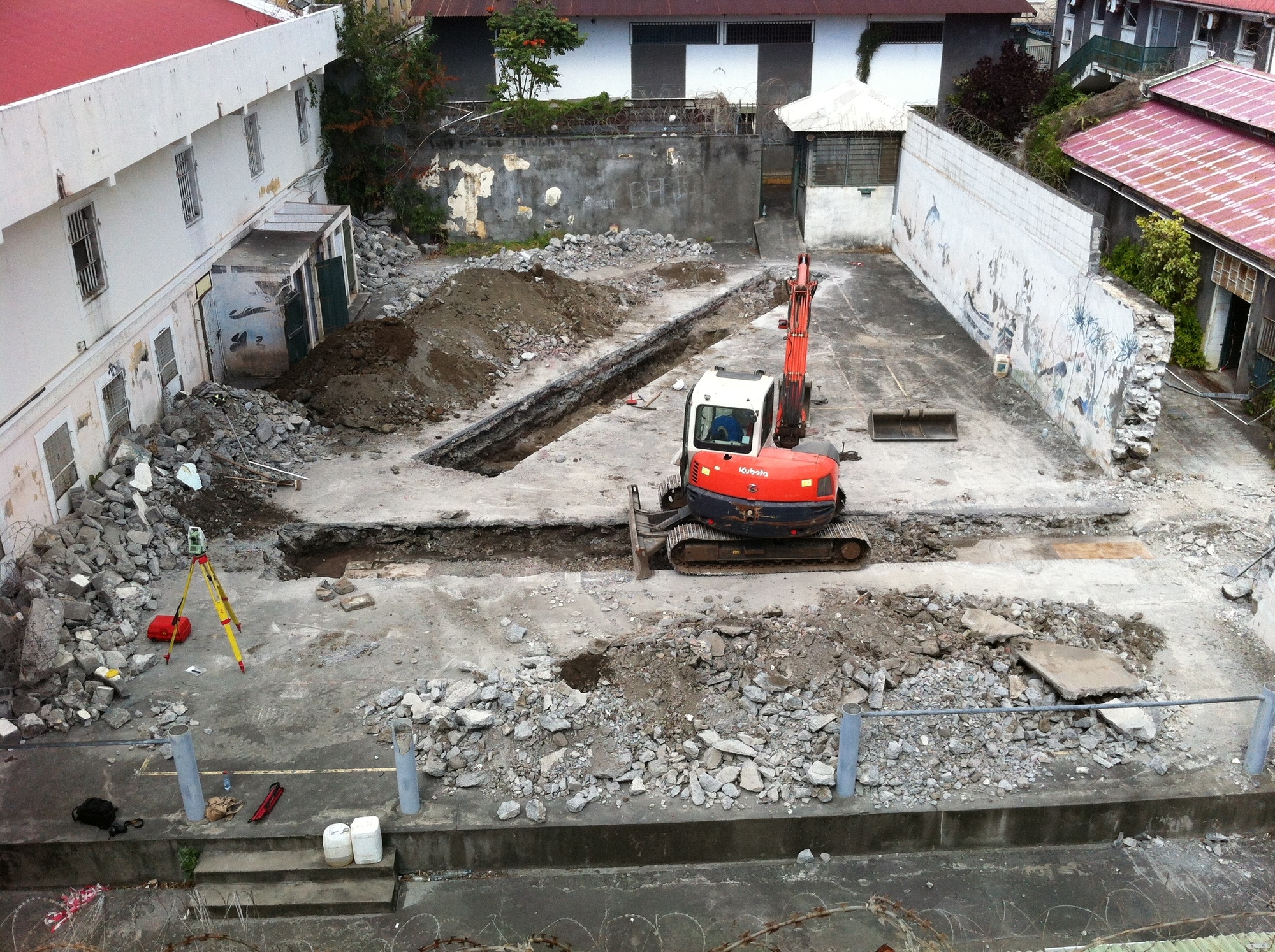
- Home
- Archaeology on Reunion Island
- Colonial organization
- Places of confinement
Most criminals in the 18th century were sentenced to prison, both in Bourbon and mainland France. Places of detention and imprisonment sprang up across the island.
In 1718, when the island’s economy was growing at a rapid rate and slaves were in heavy use, an order issued by the Provincial Council on 23 November mentions “blocks" - official buildings in major population centres: the districts of Saint-Paul – the colony’s main town –, Sainte-Marie, Sainte-Suzanne and Saint-Denis.
The growth of the island’s population combined with an increase in sentencing for marronnage led to the alteration of existing prisons and the construction of new ones in Saint-Benoît and Saint-Pierre in 1834 and Saint-Paul in 1837. An archaeological survey at Juliette Dodu prison has provided material data on changes in the prison system.
The Saint-Bernard leprosaria, a sanitary quarantine facility built in 1856, was fitted with cells for the solitary confinement of sick prisoners and disobedient residents. An excavation in 2017 shed light on the layout of the holding cells.
Prisons were occasionally built to hold children, including the Îlet à Guillaume which operated from 1864 to 1879. A historical and archaeological study made in 2020 provided more details on the spatial organisation and function of the prison buildings.
The Conseil Régional de La Réunion is planning to produce a heritage study of the different types of detention buildings in partnership with the DAC de La Réunion.



